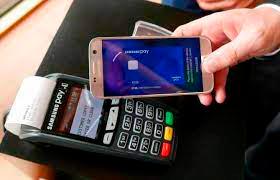PETALING JAYA: Driven by a need to avoid close contact, the usage of eWallets has seen a boost in the past year.
It is quickly becoming an integral part of the shopping experience.
More than that, non-bank eWallet providers are profiting from a service that was once the exclusive preserve of financial institutions.
Cashless payments have been possible since the advent of credit cards but eWallets have broken all barriers.
eWallet transactions amounted to RM29.6 billion in 2020, compared with RM18.2 billion in 2019. To meet the demand, there are 53 service providers, 47 of which are non-financial institutions.
GrabPay, one of the service providers, said the introduction of the ePenjana initiative last year to encourage the switch to contactless payment has helped to generate more than RM130 million in sales for local companies.
Head of GrabPay Priyanka Madan said the need to maintain social distancing to curb the spread of Covid-19 has given the use of eWallets a boost.
GrabPay, which is a unit of e-hailing and delivery service provider Grab Malaysia, has integrated digital payments for the business operations of merchants that have come on board the Grab platform.
Priyanka told theSun that outside the Klang Valley, eWallet usage has seen the greatest growth in Kuala Terengganu, Muar and Kelantan.
She said the increasing awareness has also prompted more cash-based small- and medium-size enterprises to adopt digital payments.
The rush by businesses to accept payments through eWallets is inevitable. The average Malaysian made 170 payments through the digital mode last year, according to Bank Negara Malaysia, up from 150 in 2019.
At Touch ’n Go, another electronic payment service provider, users are rewarded for spending on their eWallet. To encourage usage, Touch ’n Go has introduced various additional services and rewards programmes. Users even get to earn daily returns on the balance they have in their eWallet.
A spokesman for the service provider said the most useful feature of the eWallet is that transactions are recorded, making it easier to track one’s spending.
He estimated that more than 16 million consumers now use the eWallet regularly, a significant increase from the beginning of last year when the first Covid-19 infection was detected in Malaysia.
One person who has become used to paying from her eWallet is Allison Anne Vincent. “I have been paying my telco, Astro and water bills through the eWallet for over a year now,” Allison, 27, told theSun.
“With each transaction, there are incentives to be earned, coins to be gained, and occasionally vouchers in return for the coins earned.
“These may be obtained by completing ‘missions’, and it’s worth noting that the more missions completed through transactions, the greater the possibility of gaining even more benefits,” she explained.
“Since I get rewarded for making transactions, it has encouraged me to use the eWallet more often. It has helped to pay off some of my liabilities.
“I earn something extra while I shop. What better way to get rewarded?” Allison added.













